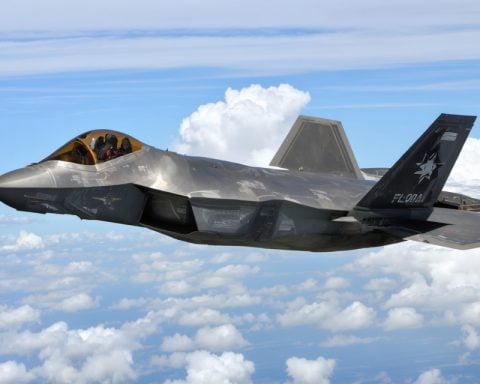Dassault Aviation, a French aerospace powerhouse, has been at the forefront of military aircraft development for nearly a century. Established by Marcel Dassault in 1929, the company faced significant challenges during World War II but rebounded strongly in the years that followed. It became a key player in shaping modern military aviation, particularly renowned for its advanced combat jets.
Among the various iconic aircraft produced by Dassault, the Mirage series and Rafale stand out. The Mirage 2000, introduced in the late 1970s, showcases its versatility as a multirole fighter, excelling in air dominance, ground strikes, and reconnaissance missions. With a remarkable speed of approximately 1,450 mph, it has played a vital role in numerous international operations, including missions with NATO.
Meanwhile, the Rafale, entering service in the early 2000s, has been pivotal in France’s military arsenal. This aircraft is tailored for diverse combat scenarios ranging from air-to-air confrontations to ground attacks, reaching speeds near 1,383 mph. Notably, the French Air and Space Force boasts over 130 of these advanced jets, along with additional orders in the pipeline.
Looking towards the future, Dassault Aviation is engaged in the Future Combat Air System (FCAS), a collaborative effort with major European partners aimed at modernizing air forces. This innovative project promises to introduce next-generation capabilities, including a New Generation Fighter to succeed the Rafale, providing lasting impact on military aviation.
The Global Impact of Military Aviation: How Fighter Jets Shape Lives, Communities, and Nations
Military aviation, particularly through the development of cutting-edge fighter jets, has profound implications for people, communities, and entire nations. The advancements made by companies like Dassault Aviation not only enhance a country’s defensive capabilities but also affect its economy, international relations, and the everyday lives of its citizens.
Economic Implications: The aerospace industry significantly contributes to the economies of nations involved in military aircraft production. For instance, France’s defense sector, buoyed by companies like Dassault Aviation, supports thousands of jobs in manufacturing, engineering, and research. The revenue generated from export missions can bolster other sectors, creating a ripple effect that benefits communities through job creation and infrastructure development. Facts show that in 2020 alone, the global military aircraft market was valued at approximately $83 billion and is predicted to grow as countries seek modernization.
Social Impact: Communities hosting military bases or manufacturing plants can experience both positive and negative social dynamics. On one hand, there may be an influx of jobs and investment; on the other, the militarization of local areas can lead to social tensions and a heightened sense of insecurity. Military aircraft have been involved in overseas operations, leading to debates on patriotism versus the ethical implications of military engagements.
National Defense and Security: The primary function of fighter jets is national security, providing countries with a means to assert their sovereignty and respond to threats. For instance, nations like France, with their advanced aircraft like the Rafale, are better equipped to engage in NATO operations, showcasing a commitment to collective defense. This deterrence factor can stabilize regions, although it can also spark an arms race, prompting other countries to bolster their military capabilities in response.
International Relations: The sale of military aircraft often plays a critical role in diplomacy. The Rafale, for example, has been sold to several countries, including India and Qatar, fostering bilateral ties. However, these transactions can also provoke controversies. Critics argue that arms sales can exacerbate conflicts or contribute to unethical military operations in recipient countries. This raises questions about the moral responsibilities of nations in protecting human rights while engaging in lucrative defense contracts.
Technological Controversies: As innovations like stealth technology, drones, and advanced avionics evolve, so too does the debate over their implications. While these advancements can deter conflicts by providing superior capabilities, they may also give rise to ethical dilemmas surrounding drone strikes and targeted operations. The discussion around the repercussions of using such technology is ongoing, with strong opinions on both sides.
Future Perspectives: Looking forward, the Future Combat Air System (FCAS), spearheaded by European partners, is set to revolutionize the landscape of military aviation. The prospect of new generation fighters promises enhanced capabilities but also invites scrutiny regarding investment priorities amidst increasing calls for humanitarian aid and climate action.
In conclusion, the world of military aviation, especially through pioneers like Dassault Aviation, illustrates a dual-edged sword affecting life on various scales. It entwines the economic prosperity of nations with the moral considerations of military operations, demanding careful navigation by governments, communities, and industries alike. For those interested in the interplay of defense and diplomacy, relevant insights can be found at Dassault Aviation and NATO.
The article has been updated: 2024-11-05 21:20
Here are some suggested related links:
Dassault Aviation – The official website of Dassault Aviation, showcasing their aircraft and innovations in military and civil aviation.
Military.com – A comprehensive source for military news, including advancements in military aviation and technology.
U.S. Air Force – The official site of the U.S. Air Force, providing insights into military aviation operations, aircraft, and technology.
U.S. Department of Defense – The official website of the U.S. Department of Defense, offering news and information about military advancements and aviation projects.
FlightGlobal – A leading aviation news site that covers developments in military and commercial aviation.
Jane’s Defence – A trusted provider of defense and security information, covering military aircraft and their roles in modern warfare.
Aviation Week Network – A key resource for aviation and aerospace news, featuring articles on military aircraft and technological advancements.
Lockheed Martin – The official website of Lockheed Martin, a major player in military aviation, showcasing their innovations and aircraft.
Boeing – The official site of Boeing, providing information on their military aviation projects and collaboration with various air forces worldwide.
Airbus – The official website of Airbus, where you can find information on their military division and aircraft developments.
The article has been updated. 2024-11-06 09:52
What innovations has Dassault Aviation brought to military aviation, and how have they impacted modern aerial combat?
Dassault Aviation has significantly revolutionized military aviation through a series of innovative designs and technological advancements. One of their most notable contributions is the development of the Mirage series, particularly the Mirage III, which was known for its delta wing design that enhanced aerodynamic performance and maneuverability. This aircraft set new standards for speed and agility in the 1960s, greatly influencing aerial combat tactics.
Another landmark achievement of Dassault is the Rafale, a multi-role fighter jet designed to perform a wide range of missions, from air superiority to nuclear deterrence. The Rafale incorporates advanced avionics, stealth technology, and unmatched versatility, allowing it to excel in both air-to-air and air-to-ground operations. Its introduction has reshaped the strategic capabilities of various air forces around the world, enhancing their combat effectiveness in modern warfare.
Additionally, Dassault Aviation’s focus on integrating cutting-edge technology, such as fly-by-wire systems and data fusion capabilities, has refined pilot control and situational awareness, further impacting military strategies. Overall, Dassault Aviation’s legacy is marked by a commitment to innovation that continues to shape the landscape of military aviation and aerial combat today.







